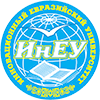Annotation:
Modern education faces the need for constant updating and adaptation to new realities. One of
the key problems is to improve the efficiency of the educational process
Тo assess the impact of information and communication technologies on the quality of
education in a comprehensive school.
Research methods to achieve this goal, a comprehensive analysis of scientific literature was
conducted, as well as practical research within the educational process: a survey of teachers and
students, action research to compare the results of lessons conducted using digital technologies and
with traditional teaching methods.
Вестник Инновационного Евразийского университета. 2024. № 3 ISSN 2709-3077 29
Results and their significance the study showed that the use of information and
communication technologies in the educational process allows: to increase student motivation,
individualize learning - information and communication technologies allow you to create personalized
learning trajectories for each student, taking into account their pace and characteristics of information
perception. Another important result is the ability to develop digital competencies necessary for a
successful life in modern society. Finally, the use of information and communication technologies
allows for a more in-depth and comprehensive study of educational material, and also provides
feedback between teacher and student, which leads to an improvement in the quality of education.
Year of release:
2024
Number of the journal:
3(95)
Heading: Pedagogy and psychology

 English
English Русский
Русский Қазақ
Қазақ